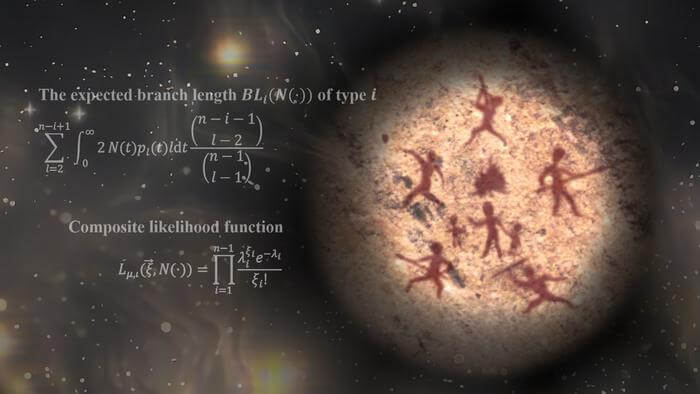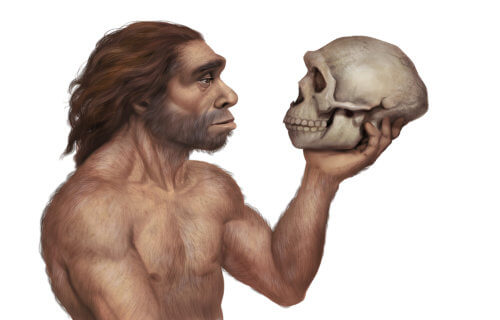SHANGHAI, China — Humans were almost a historical footnote, nearly facing extinction approximately 900,000 years ago, a new study explains. An international team believes that a “severe bottleneck” occurred during our early ancestral history, during which the population was maintained by a mere 1,280 breeding individuals. The event could have marked the end of modern humans, however, scientists theorize that this might have instead contributed to the development of our intelligence, as the brain evolved more rapidly due to natural selection.
A novel method for inferring ancient population sizes indicated that humanity, as we know it today, came perilously close to being eradicated. This new technique, known as FitCoal (fast infinitesimal time coalescent process), allowed the research team from the United States, Italy, and China to accurately deduce demographic information from modern-day human genomic sequences of 3,154 individuals.
Published in the journal Science, the study reveals that early human ancestors endured this “prolonged, severe bottleneck” for about 117,000 years. Although this research has shed light on certain aspects of our early to middle Pleistocene ancestors, scientists acknowledge that many questions remain unanswered.
“The fact that FitCoal can detect the ancient severe bottleneck with even a few sequences represents a breakthrough,” says senior author Yun-Xin Fu, a theoretical population geneticist at the University of Texas Health Science Center at Houston, in a media release.
Dr. Fu explains that the results obtained using FitCoal revealed that early human ancestors experienced an “extreme loss of life” and, consequently, a loss of genetic diversity.
“The gap in the African and Eurasian fossil records can be explained by this bottleneck in the Early Stone Age as chronologically. It coincides with this proposed time period of significant loss of fossil evidence,” says senior author Giorgio Manzi, an anthropologist at Sapienza University of Rome.

The research team suggests that the decline in the human ancestral population was primarily due to climatic changes, such as glaciation events, temperature fluctuations, severe droughts, and the extinction of other species, that were potential food sources. An estimated 65.85 percent of current genetic diversity may have been lost due to the bottleneck during the early to middle Pleistocene era. This extended period with minimal breeding individuals threatened humanity’s existence.
However, the researchers propose that this bottleneck may have facilitated a “speciation event,” during which two ancestral chromosomes converged to form what is now chromosome 2 in modern humans. This discovery implies that the last common ancestor of Denisovans, Neanderthals, and modern humans, or Homo sapiens, may have been identified.
“The novel finding opens a new field in human evolution because it evokes many questions, such as the places where these individuals lived, how they overcame the catastrophic climate changes, and whether natural selection during the bottleneck has accelerated the evolution of human brain,” explains senior author Yi-Hsuan Pan, an evolutionary and functional genomics at East China Normal University (ECNU).
The researchers believe that an ancestral struggle took place between 813,000 and 930,000 years ago. This belief prompts further investigation into how such a small population managed to survive. The researchers speculate that the mastery of fire and a shift towards a more hospitable climate may have contributed to a subsequent rapid population increase around 813,000 years ago.
“These findings are just the start. Future goals with this knowledge aim to paint a more complete picture of human evolution during this Early to Middle Pleistocene transition period, which will in turn continue to unravel the mystery that is early human ancestry and evolution,” concludes senior author LI Haipeng, a theoretical population geneticist and computational biologist at Shanghai Institute of Nutrition and Health, Chinese Academy of Sciences (SINH-CAS).
South West News Service writer Stephen Beech contributed to this report.


“An estimated 65.85 percent …” Aww come on man, can’t you be more specific? Why only to two decimals?
Of course there are more humans in the world than ever before but I think that humans are de-evolving since WW II. That war conquered nature and set the rules that made the world safe for decline.
900,000 years ago? Bones of primitive Homo sapiens first appear 300,000 years ago in Africa, with brains as large or larger than ours. They’re followed by anatomically modern Homo sapiens at least 200,000 years ago, and brain shape became essentially modern by at least 100,000 years ago.